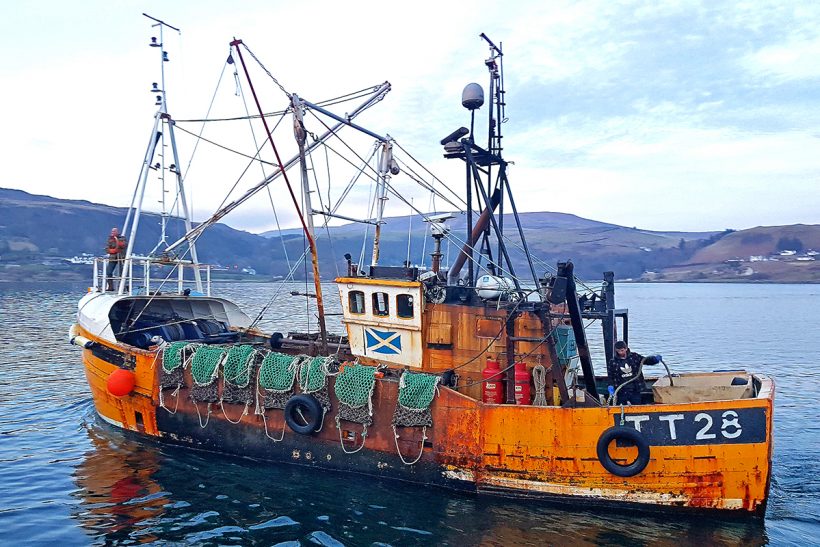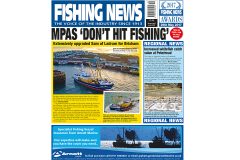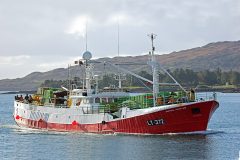‘Too early to tell’ says SFF.
There is no evidence so far of any significant social or economic effects from the highly controversial MPAs introduced early last year on the west coast of Scotland, according to a Marine Scotland study, reports Tim Oliver.
But it says the industry may still be adjusting to the changes and the effects could increase over time.
The report assessed ‘emerging evidence’ on the socio-economic impact of management measures in MPAs on the west coast of Scotland that were strongly opposed by local fishermen when they were introduced in February 2016.
The SFF welcomed the fact that a report had been prepared and that the socio-economic impact assessment would be continuing, but stressed that it was essential to look at the impacts on individual communities rather than just at the wider regional level (see below).
The report includes evidence from ‘key informant’ interviews, analysis of fishing activity data and three case studies of the South Arran and Wester Ross MPAs, and the East Mingulay Special Area of Conservation (SAC).
It says there has been high compliance, with ‘very few suspected cases of deliberate incursion into MPAs or breaches of management measures’.
There were no notable changes in the number of fishing trips and effort days following the introduction of the measures.
While evidence from interviews suggested that three vessels may have left the industry because of the MPA management measures, further enquiry found evidence for only one.
Fishing with mobile dredges decreased in the majority of the rectangles covered by the MPAs, but in a small number of areas it increased to such an extent that total dredging overall in 2016 was higher than in 2015. “Key informant interviews and case studies suggest this was a result of mobile dredge effort shifting and increasing to fishing grounds outside of the MPAs, but still in the same rectangles,” says the report.
“Fishing with mobile trawls and static gear decreased for the whole study area. Mobile trawl effort increased in two of the rectangles affected by MPA management measures, suggesting displacement to other areas within these rectangles. Overall, mobile trawl effort decreased in all rectangles, indicating there may be other factors driving changes in fishing effort.
“Similarly, there may also be other factors driving static-gear effort, which decreased in all rectangles, yet only two of the MPAs with management measures had restrictions on use of static gear.
“Concerns by key informants that static effort may have increased inside MPAs were not supported by the case study evidence. There was no noteworthy evidence of increases in the number of creels deployed by static vessels in any of the MPAs.”
The report says there were no notable changes to landings of key species such as prawns and king and queen scallops in the affected areas in 2016 compared with 2015. Evidence from interviews and case studies ‘suggested there had been no overall decreases in fish landings since the introduction of MPA management measures’.
But the evidence also suggested it was too early to observe significant changes in landings due to the measures.
Seafood processors in the region reported no declines in overall supplies of raw materials – as previously feared – because they had sourced produce from vessels working in other areas of Scotland. But some processors said the MPAs had affected the size distribution and quality of fish landings in certain summer months.
“Generally, processors were concerned about the sustainability of fishing grounds outside of the MPAs and the risk to future supplies,” says the report.
They also suggested that there is lower confidence in the viability of the seafood sector because they fear the management restrictions in MPAs could affect supplies in the future.
The report concludes: “At the national level, there is no evidence to-date of significant socio-economic impacts that could be attributed to the introduction of MPA management measures. This is consistent with evidence provided by Marine Scotland prior to the introduction of MPA management measures.”
But it says it is possible that the industry is still adjusting to the introduction of MPA management measures. “Key informant interviews and case studies suggest that at the local level, socio-economic impacts of MPA management measures could increase over time as various sectors fully adapt to the measures; the productivity of available fishing grounds change due to a shift in fishing pressure; and, as further management measures are introduced.”
It proposes that Marine Scotland should continue to monitor the socio-economic impacts of MPAs on all sectors and that there should be another assessment in 2018, to allow time for the various marine sectors to adapt.
Saying that fishing and onshore processing are two ‘priority sectors’, the report says there should be continuing monitoring to decide whether ‘an earlier evaluation is needed, and for ministers to respond to any significant changes occurring between now and 2018’.
SFF: ‘Look at effects on individual communities’
SFF chief executive Bertie Armstrong welcomed the fact that a report had been prepared on the socio-economic impact of the MPAs and, in particular, that further monitoring would take place.
He told Fishing News: “We agree with the conclusion that it is simply too early to make sensible deductions. Given this fact, we are critical of the inferences that the impact on fishing is limited, and that there may be wider societal benefits – the report actually discounts both by stating that it is simply too early to make confident judgements.
“We are encouraged that the monitoring is prepared to look at the cumulative effects on sustainable fishing of decisions in marine planning, including placing of MPAs, but there is one central point to make – the work must be conducted at the right grain or level.
“The monitoring must include looking at the effects on individual communities. It is very easy to scale-up an impact to regional to national level, diluting, thereby, the local effect. A closure or restriction, for whatever reason, may result in a small percentage impact on the whole regional or national industry, but may actually put the lights out in a fishing-dependent local community. This was the principal failure of the socio-economic impact assessments done in preparation for this phase of MPA establishment – reporting in mostly national terms it trivialised, or simply missed, the local effects. We hope the ongoing monitoring will illuminate these.”
Bertie Armstrong said the SFF supported and cooperated with ‘a coherent approach’ to establishing MPAs. “Given the fact that there are choices to be made on areas and management measures, we emphasise the importance of meaningful socio-economic assessment in informing those choices,” he said.
Read more news from Fishing News here.






